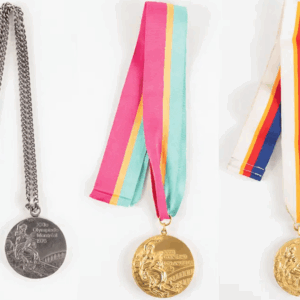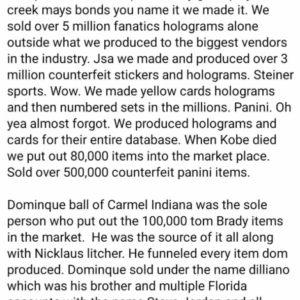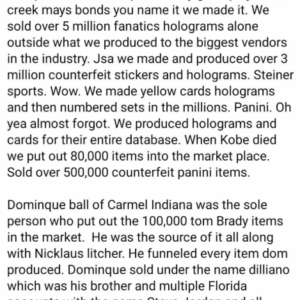In a classic tale of unexpected fortune hidden away in dusty corners, an old Northeast Ohio attic has turned into a field of dreams for two lucky siblings. As the siblings gingerly sorted through their late parents’ belongings, tucked away in an unassuming, dusty cigar box was not merely a collection of keepsakes, but a treasure trove of forgotten history. Nestled within lay a collection of vintage baseball cards, headlined by none other than Sultan of Swat himself, Babe Ruth, waiting to take their turn at bat on the auction block.
The family, brimming with curiosity and perhaps a lingering sense of skepticism, turned to Stark County’s Kiko Auctions to unveil the potential of this cardboard goldmine. Their hunch proved to be a home run. The discovery unearthed a total of 623 lots up for grabs when the auction went live from May 28 to June 2. Dominating the lineup were cards from the distinguished 1933 Goudey Big League Gum series, a coveted collection among enthusiasts and historians of America’s favorite pastime.
For those uninitiated into the vibrant world of card collecting, the 1933 Goudey set marks a significant chapter in the evolution of trading cards. Not only was it the pioneer in pairing cards with sticks of chewing gum—a marketing masterstroke that fostered widespread engagement—but it brimmed with illustrious Hall of Famers, making it a holy grail for card aficionados.
As the gavel closed on this virtual stadium of nostalgia, the auction soared to a final tally of $120,699 in hammer prices. After factoring in a 10% internet premium and 6.5% in local sales tax, the total ascended to an impressive $140,000. Each bid seemed to echo the public’s insatiable appetite for slices of history tied to sweat, grit, and legendary sportsmanship.
One particularly keen bidder made significant waves, quite possibly taking home a lion’s share of the valuable cardboard with Babe Ruth’s storied face gracing it. The crown jewel of these sales was a 1933 Goudey Babe Ruth card featuring a striking red backdrop, which captivated its new owner to the tune of $8,000. As the final tallies reeled in, five different Babe Ruth cards collectively fetched a healthy $35,250 before considering the additional taxes and fees.
The array of condition states amongst these cards introduced an element of risk and exhilaration in equal measure. None of the cards had undergone professional grading, a procedure that appraises a card’s condition and authenticity, thus solidifying its market value. In bypassing this precaution, bidders rolled the dice, relying on their trained eyes and instincts—a daring pursuit underscored by the very nature of collecting vintage memorabilia.
These memories encased in cardboard joyously played out in a nexus of time travel, connecting past and present through a shared love of baseball. The cards’ journey from a quiet Ohio attic to becoming the object of fervent online auction bids illustrates the extraordinary allure of Americana. It is the magical moment when forgotten family legacies intersect with modern-day treasure hunting, breathing life into the echoes of a bygone era.
This delightful episode of serendipity serves as a reminder to keep our eyes open for little gems hiding in our corners, awaiting discovery. There is an undeniable charm in the potential that any ordinary cardboard box might hold. For the sibling sellers, this could have been just another task in sorting family treasures; instead, it became a slice of serendipity—it might encourage others to start lifting up boxes in their attics and maybe, just maybe, stumbling upon their very own piece of history.
Thus, while the Babe Ruth cards may be off to new homes, the excitement they stirred lingers on, a testament to the timeless magnetism of sports and nostalgia. In their wake, they leave an enduring reminder that sometimes, the past stays very much alive through these vibrant flashes of shared heritage. Hidden treasures indeed, it seems—are often just a dusty box away.






